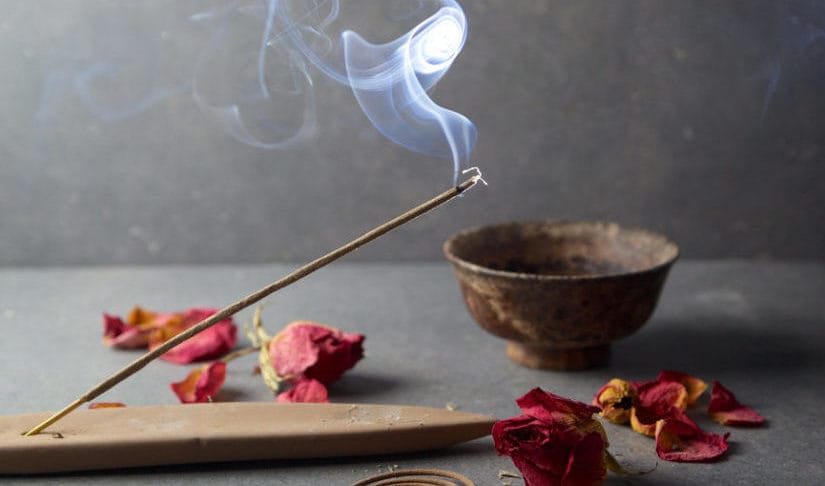
What is Incense?
The word “incense” is derived from the Latin word “incendere,” meaning “to burn.” And for several millenniums of human history, we’ve done just that. “Incense” refers to a specific bound material which is burned to produce a number of rich fragrances, and not the fragrance itself. While our modern definition is rather narrow, many experts believe that other flavorful items like cedars, berries and roots have been burned throughout human history to produce the same effects. Like anything that’s withstood the test of time, the use of incense has evolved and improved over its many millenniums of history. Better yet, you can pick some up at 710Pipes’ Denver or Northglenn smoke shops and burn an homage to that rich history tonight. Below we’ll explore the most fascinating aspects of incense’s history and its uses across the globe.
China
The earliest recorded use of incense occurred in Ancient China, as many as 2,000 years BCE. At this point in history, incense took hold as a key component in many formalized ceremonies and religious rites. It gradually became commonplace in Chinese culture throughout the Xia, Zhou and Shang dynasties. By the Song dynasty, multiple buildings were made for the sole purpose of incense ceremonies. It was also burned to honor late ancestors and household gods, at processions and festivals.
Egypt
Trees bearing fragrant incense were imported to ancient Egypt from the coasts of Arabia and Somalia. Early Egyptians burned combustible bouquets – an early form of the flammable wicks best known today. In some cases, incense was burned for practical everyday purposes, like alleviating unwanted odors with its pleasing scent. The Egyptians also heralded incense for its rumored spiritual powers, wielding it to scare away demons and pay tribute to their gods. It was burned in daily worship rituals before the image of Amon-Re, the sun god. It was also used to ceremoniously honor the dead ancestors of the ancient Egyptian people at the time of their passing, as it was believed that their spirits could rise to the heavens with the burning flame. One of the oldest incense burners has been traced to Fifth Dynasty Egypt. Balls of resin have recently been found in the tombs of El Mahasna, with the remains of those deceased in prehistoric Egypt. Perhaps most concretely (pardon the pun), the Egyptian Temple of Deir-el-Bahari showcases a number of stone carvings in which an expedition for incense is shown. All of these speak to the widespread use and reverence of incense amongst early Egyptians.
Greece
Grecian citizens of 8th century BCE burned woods and resins in lieu of incense’s modernized form. They adopted this ritual from the Orphic people. Like the Egyptians before them, both early Grecians and Orphics believed that burning incense would stave off demons.
Greek and Egyptian mythologies both emphasized incense as a powerful aphrodisiac. Its use was therefore depicted in mythical goddesses and nymphs, intended to heighten their sexual desire and feelings of attraction. We can’t guarantee the claims of mythical creatures for your modern-day love life, but stop by the smoke shop if you’d like to give it a try.
Japan
In Nihon Shoki – which translates to “The Chronicles of Japan” – an aromatic wood is said to have drifted to shore from waters surrounding the Awaji Island in the year 595. When residents found and burned the wood, they were delighted by its lovely scent. Mystified, the locals brought it to the noble members of the Imperial Court, who recognized it as a Aloeswood or Jinkoh. In other words, the noble classes had already breathed the smoky wonders of incense, but the masses caught wind of it later by chance. For nearly ten centuries after its introduction to Japanese culture, incense was exclusively popular amongst ranks of lower economic and social classes. By the 15th and 16th century Muromachi period, incense was finally celebrated by commoners and nobility alike.
A well-respected Buddhist priest from Tang China, known as Ganjin, is known for bringing awareness of Buddhist precepts to Japan. He’s also credited in kind with the introduction of kneaded, manmade incense to Japan in the 6th century. Buddhist monks used it with devotion in religious ceremonies like mystical purification rituals. Some samurai warriors are said to have used the lovely, arid scents of Koh – a well-made Japanese variety of incense – in their helmets to embody an aura of invincibility. This was also intended as a cordiality to any opponent who may remove and claim the warrior’s head in the battle that followed. Say what you will of these warriors, but they didn’t fight to the death without some manners for their beheader-to-be.
Denver, Colorado
If you’re ready to join 4,000 years of our incense-burning ancestors, we’ve got you covered. 710Pipes carries all of the incense products you need, as well as vaporizers, pipes, water pipes and so much more! Stop by our Northglenn head shop between 8AM-10PM, seven days a week. We have two Denver pipe shops open daily from 12-8PM (11AM-9PM Thursdays through Saturdays) – on Colfax and on Evans near DU. Denver University students get 10% off with a valid student ID!
We’ll see you soon!
